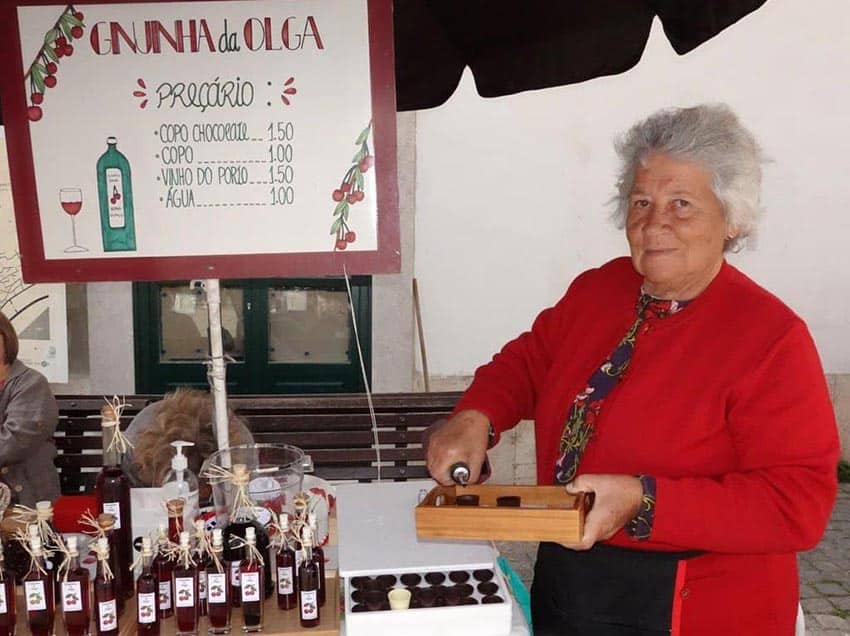
Lisbon is Old European Charm at Lower Costs with Fewer Crowds
By Tab Hauser
Senior Writer
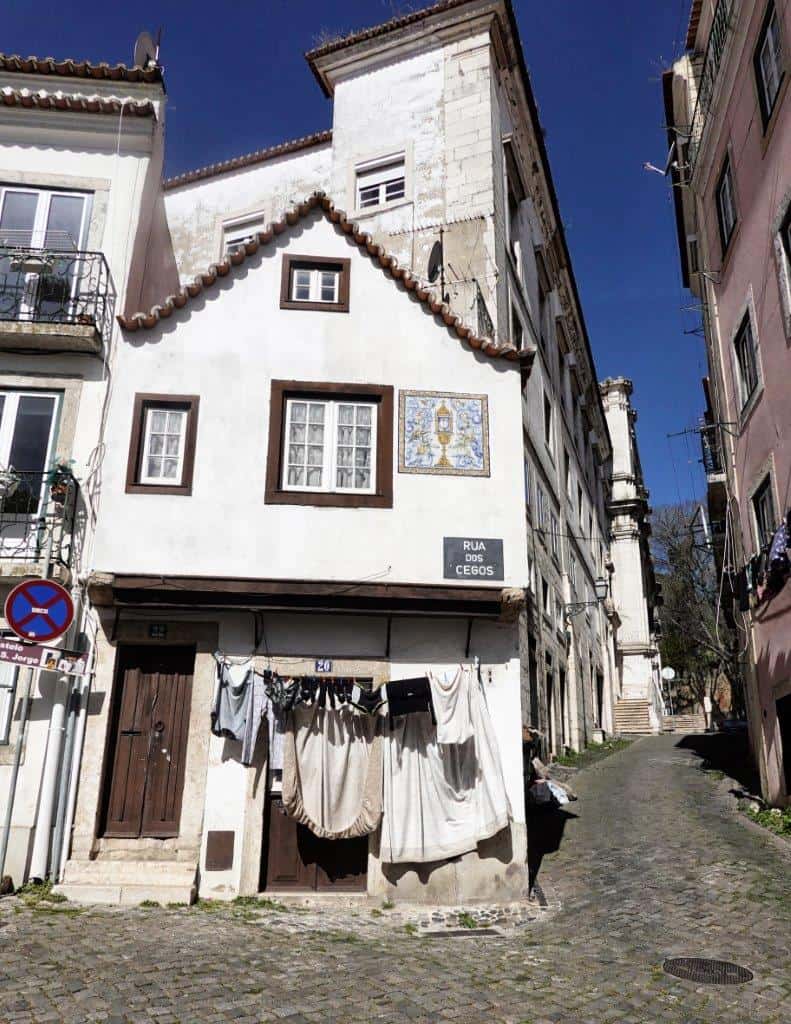
Lisbon checks all the boxes when it comes to visiting an old European capital. There is a lot here. In Lisbon, you can stroll down charming cobblestone streets, visit impressive UNESCO sites, take in beautiful views, see unique museums, and enjoy good food. Lastly, at 2800 hours of sunshine, it is one of Europe’s sunniest cities.
Lisbon is an old city founded around 3200 years ago. It pre-dates Rome by about 500 years. For visitors, it is easy to get around as most sites are close together. For a weekend, I recommend at least a day and a half in the central part of the city and another day for Belem and the attractions along the river.
Lisbon Tuk Tuk Tour
While Lisbon is called the City of Seven Hills you don’t have to strain yourself to see them. We found a fun and informative way to get around with Local Tuk Tuk tours. Tuk Tuk’s in Lisbon are six-passenger electric three-wheel vehicles. They are comfortable and make getting around the narrow streets easy. Prices are set for the tour so having friends along brings the cost down on a per-person basis.
Our guide Alida took us on the Lisbon Hills Tour. This drove us through different neighborhoods and to three viewpoints. Along the way, we stopped at important Lisbon sites where Alida explained the history and what we were viewing. It was a good way to acclimate us to the Lisbon. https://localtuktuk.com/
Walking Tour
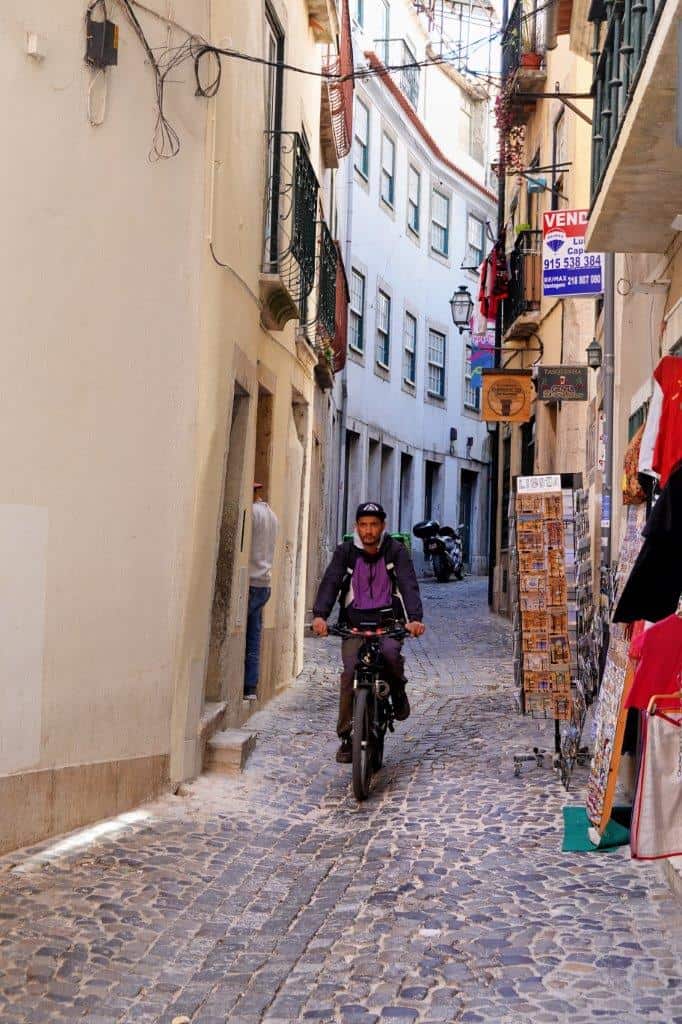
Alfama is the oldest neighborhood in Lisbon. It stretches between the castle and the Tagus River.
This area survived the 1755 earthquake and as a result, you can still walk its maze of narrow cobblestone streets that connect to its small squares. It is here you can view Lisbon’s oldest house. Alfama has many restaurants and places to hear Fado music.
To understand, and not get lost in Alfama along with other nearby areas, we hired Kleiber Bassi of Hi Lisbon Walking Tours for three hours. He navigated our way not just through not just Alfama, but to another two dozen points of interest in the surrounding neighborhoods.
Starting at the Praça do Comércio
Our walk started at the Praça do Comércio and continued to Augusta Street Arch, Casa dos Bicos, Sé Cathedral, a tile studio, Portas do Sol viewpoint, the National Pantheon, St. Vincent Church, and viewed the St. George’s Castle.
We walked through the bustling areas of Baixa, Rua Augusta, and the Chiado area. He showed us the St. Justa Elevator, Rossio Square and Station, the National Theater, São Domingos Church, the Jewish Memorial, and the Moorish courtyard in Casa do Alentejo. For this tour, I recommend good shoes. www.hilisbonwalkingtours.com
Highlights of Lisbon
Rossio Square
Rossio Square is a lively place. The square has two fountains, a 90-foot pedestal statue, and a cobblestone-tiled floor in a wave pattern. This square has been a popular hangout since the 1400s.
Praça do Comércio (Commerce Square)
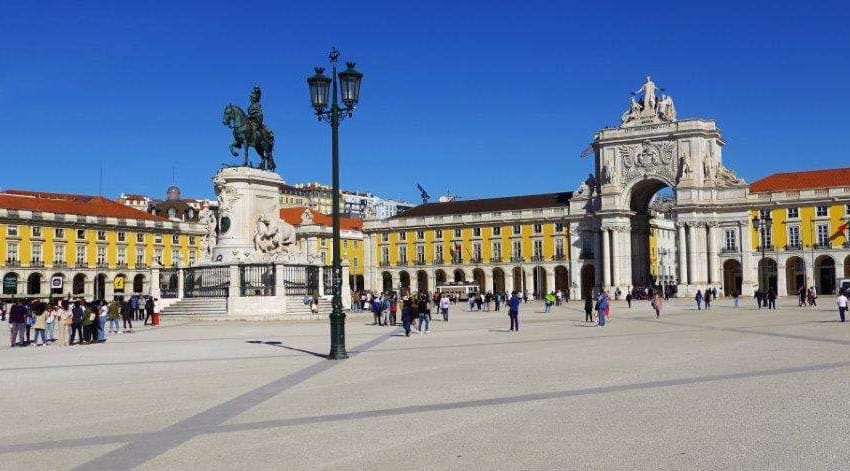
Located by the Tagus Rriver, Praco do Comercio is one of Europe’s largest squares. It was completely rebuilt after the 1755 earthquake. It is a pretty place with three-story yellow buildings on three sides. There is a large arch and a statue of King Jose I on a horse. On the west side of the square is the Wines of Portugal. This is an excellent place to take a break and taste the wines from each region of the country. https://www.winesofportugal.com/en/
Castelo de Sao Jorge
Visitors coming to Europe love castles and Lisbon has one. Castelo de Sao Jorge sits over the Alfama neighborhood. The castle looks imposing from the outside. If you are pinched for time, I don’t recommend the long queues to enter as there are not much old “castle-like” things to see inside. Enjoy the castle from two view areas (Miradouros) below.
Miradouro De Sao Pedro de Alcantara
This viewpoint is one of the best in Lisbon. It is a large park with fountains and statues that you may want to linger around for longer than just for the view. From here you can see much of Lisbon and its orange roofs, the river, and the castle.
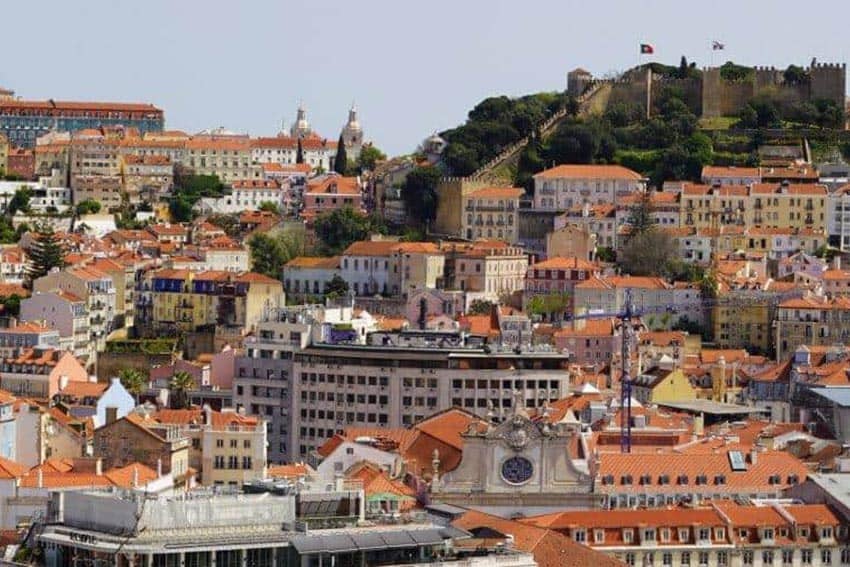
Miradouro Da Senhora Do Monte
At the “Viewpoint of the Lady of the Mount” stop at the food truck first for a couple of tasty pasteis to enjoy while taking in the view. This is Lisbon’s tallest lookout with views to the castle, Tagus River, the April 25th Bridge, downtown, and the old quarters. It is stunning and Instagram-worthy. This is also a good place to come to enjoy the sunset. (One other viewpoint to consider is the Miradouro Portas do Sol)
Ginjinha by Olga
Ginjinha is a Portuguese liqueur made from infused sour cherries and sugar. It’s dark red, sweet, and has an alcohol content of about 18%. It is sold all over Portugal. When walking through Alfama look for Olga. She has been serving it here for years. It is $1E for a shot or splurge another .50E and get it served in an edible dark chocolate shot. Yum!
Covento Do Carmo
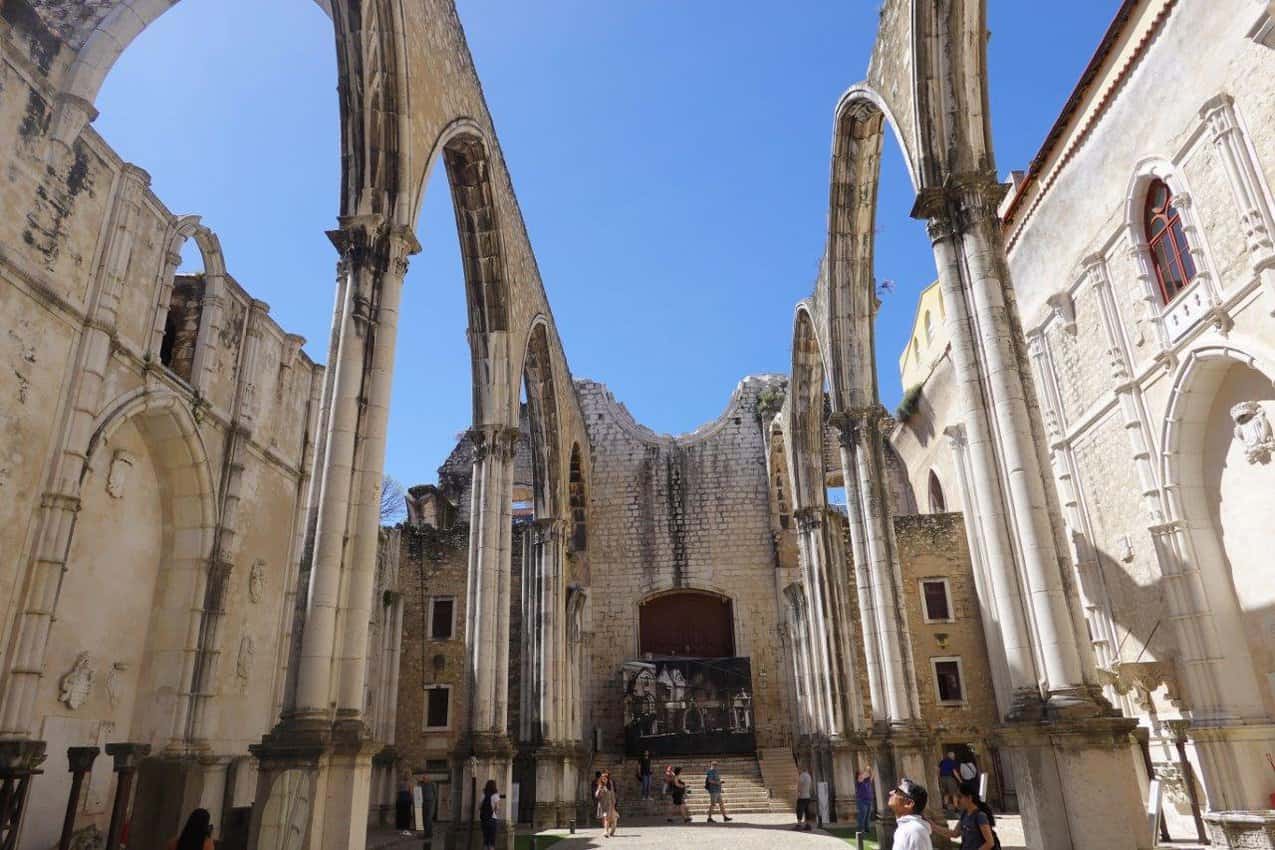
The Convento Do Carmo is unlike any other large church you will see in Europe. The place is a wreck, literally because of the 1755 earthquake.
You walk through the unrestored ruins of a church with walls, arches, and pillars but no roof as it collapsed on the congregation that Sunday morning.
It is almost surreal. In the back is the Carmo Archaeological Museum. Their strange collection of artifacts includes an Egyptian mummy and two gruesome-looking Peruvian mummies under glass. Christopher Columbus’s wife is entombed here.
Igreja De Sao Domingos
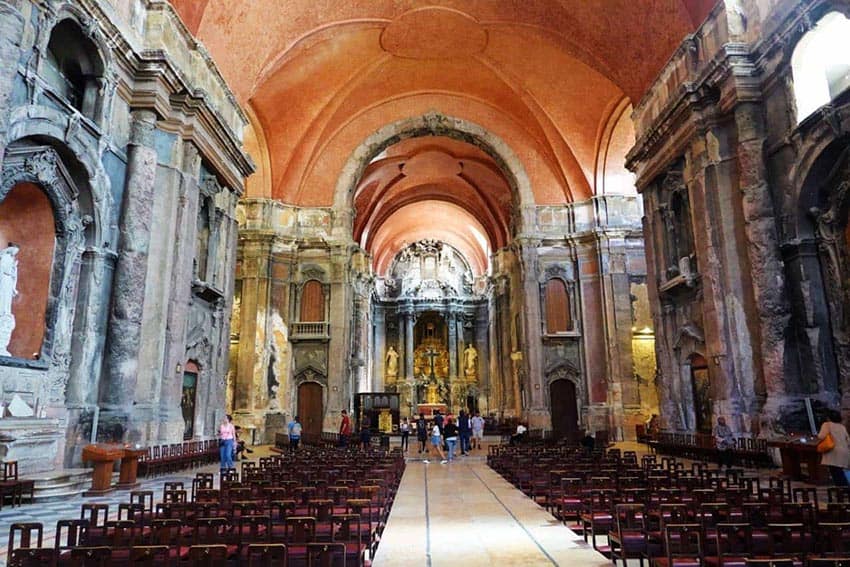
The Igreja de São Domingos is another unlucky church. It had dealt with major repairs after the earthquakes in 1531 and 1755.
Then in 1959, a major fire devastated the church destroying artwork and collapsing the ceiling. Inside this large church, you can see damaged pillars and scarred walls.
After the renovation, orange ceilings and walls were put up that look out of place.
The National Pantheon
The National Pantheon was built as a church in 1682. In 1916 it transformed into the Pantheon completed in 1966 making it the longest building project in Portugal’s history.

The structure is a beautiful example of Portuguese Baroque architecture. The modern dome is decorated with colored marble. Inside are entombed some of the country’s most important people. Nearby you can find the city’s popular flea market.
Feira Da Ladra (Theives’ Market)
The Thieves’ Market, located near the National Pantheon takes place Tuesday and Saturday. Here you can find used and antique items as well as the usual things tourists look for.
Portuguese Tiles
When walking through Alfama or Chaido, make it a point to stop in at XVIII – Azulejo & Faiança. Inside you will see artists painting tiles alongside their high-quality beautiful earthenware.
With so many patterns, this is the perfect place for a souvenir of your trip. http://xviii.pt/
Rua Augusta
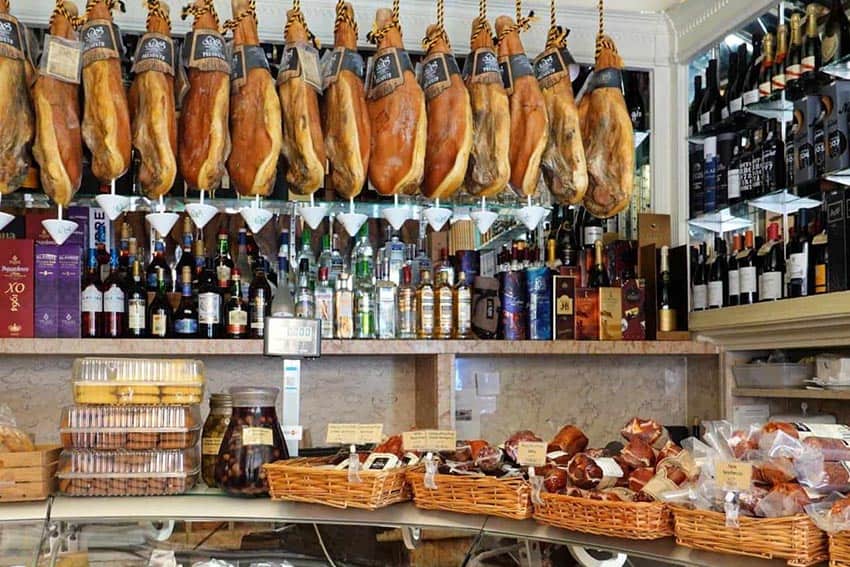
Connecting Lisbon’s two main squares (Praca do Comercio and Rossio) is the city’s liveliest street. The .40 miles of pretty cobblestone pedestrian-only walkway has both high-end international shops along with stores that have been here for decades.
On the Rua Augusta, you will see street vendors and artists along with places to sip a beverage and people-watch.
An Evening of Fado
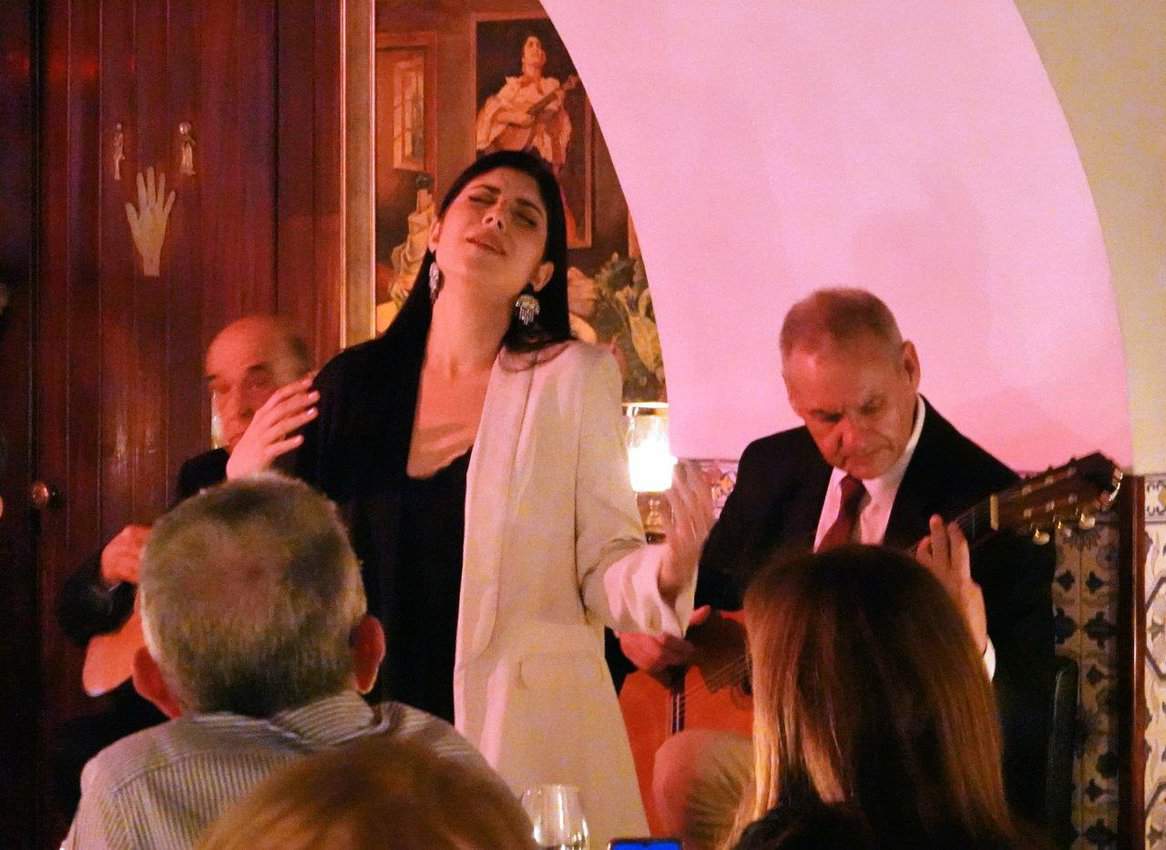
To embrace old Lisbon’s musical culture I recommend booking a Fado restaurant. Fado’s history can be traced to the 1820s in Lisbon.
Fado is performed by a singer with a couple of guitarists. While the words are all in Portuguese it is easy to understand the passion by just watching and listening to the singer.
The songs can be about destiny, betrayal in love, death, and despair though we did hear what sounded like happier tunes.
We dined at A Severa which was a higher-end restaurant having a mix of locals and tourists. Try the salted cod if you want to go local.
A Very Lisbon Moment
Traveling means catching a special moment you cannot read about in any guidebook. Finishing our Fado dinner, we rounded the corner and stumbled into the square of the Statue of Antonio Ribeiro at 10:30 PM.
Here a street performer playing the guitar and working a bass drum took the locals by surprise. Within minutes, friends were dancing together. They then encouraged strangers (me) to join them.
Before long 30 or so smiling strangers bonded together in what looked like a happy sea of humanity. The world needs more of this.
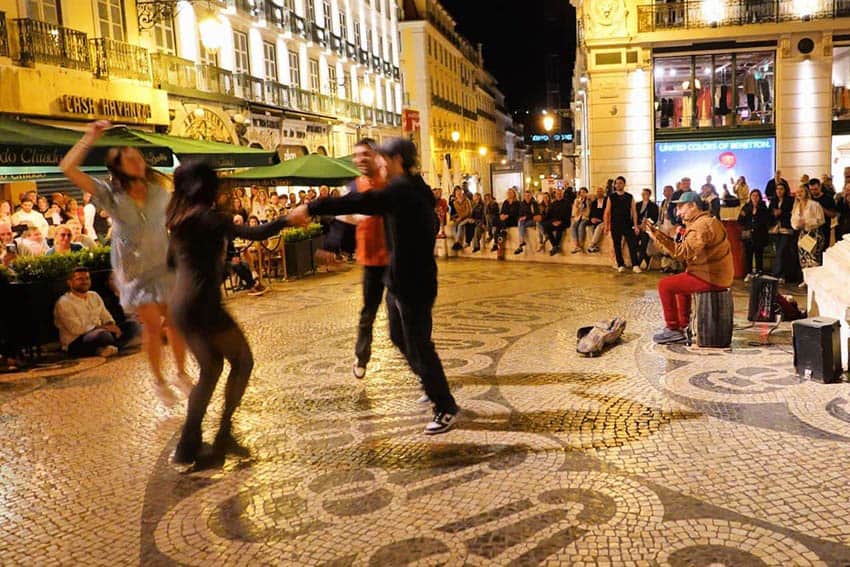
A Transportation Antique
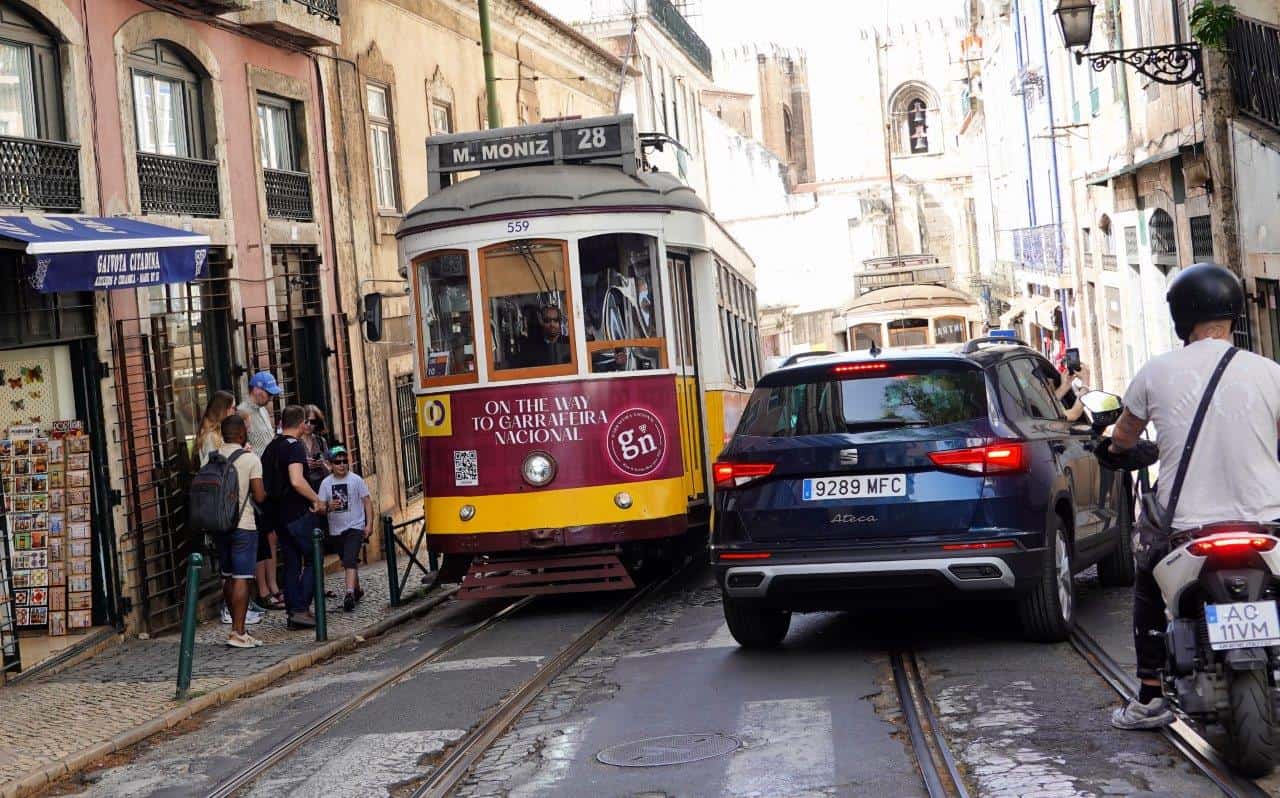
The cutest and oldest way to get around is Lisbon’s famous 28 Tram.
The “28’ started service in 1914 and still rattles around Lisbon’s hills and narrow streets in one of 50 turn-of-the-century cars.
One reason the 28 still exists, is because the newer trams could not squeeze into the narrow streets with tight turns.
While many tourists use this as a hop-on-hop-off vehicle I would not. Just take the 4.5-mile ride non-stop and enjoy it by getting on early and getting a seat at the Martim Moniz stop.
It is not as much fun standing due to visibility and constantly holding your balance as it takes a turn or brakes hard.
Belem
Belem is where the first Portuguese sailed out on the Atlantic Ocean to explore the world. This is an area on the river that is west of the central hub of Lisbon. While it is part of Lisbon, Belem feels like a different city and visitors should allocate most a day to the sites along the river.
It is easy to get to and around Belem using trams that travel the riverfront. My recommendation is to take one 30 minutes west and make your first stop at the Tower of Belem. Then walk back to see the sites below ending at the National Coach Museum. From there catch a tram heading east to either the Time Out Marketplace or the National Tile Museum.
Tower of Belem
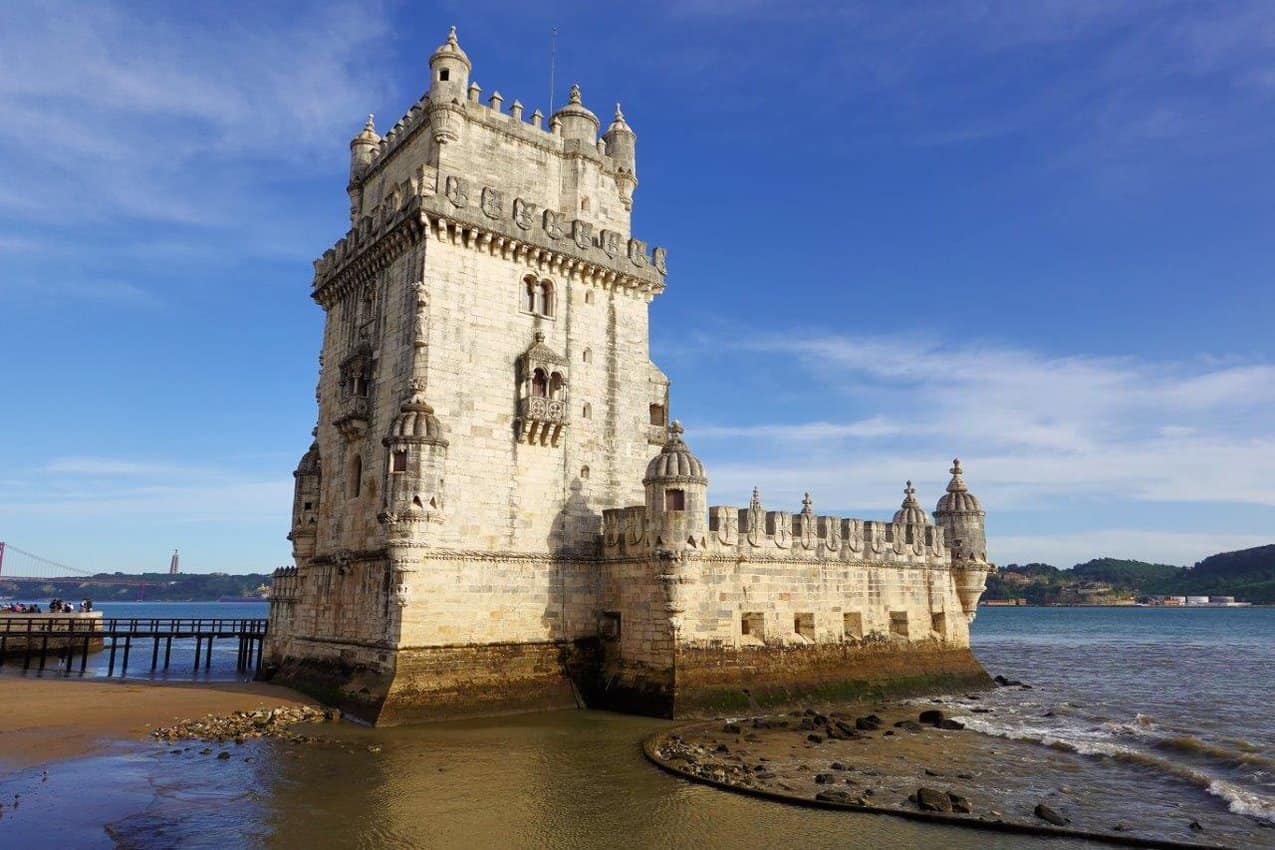
The Belem Tower is one of the prettiest and oldest structures in Lisbon. It is an example of Manueline architecture that was completed in 1519 to protect the river entrance.
The four-story tower is made from limestone and is 100 feet tall. The Belem Tower was named a UNESCO World Heritage Site in 1983.
My recommendation to see it would be to grab a drink from a nearby cart and simply enjoy the view. Locals and guides have said there is not much to see inside for the admission fee and queue required.

Consider visiting the tower at the end of the day if you want to watch east-facing walls glow in the late afternoon sun.
Monument of Discoveries
A ten minutes walk west of the Belem Tower is the Monument of Discoveries. This 171-foot structure is dedicated to Portugal’s age of discovery between the 15th and 16th centuries.
High above on a ramp of what looks like an old ship is 33 figures representing those that made Portugal a world power at the time. Its leader, Henry the Navigator, stands at the point. Visitors can climb to the top for the view.
Below the monument is a 160-foot diameter tiled Compass Rose. In the center is a world map.
The map has several ships’ names with the years they set out and what they discovered. From the Monument of Discovery cross the main road to visit the Jeronimos Monastery. Before getting there stroll the Imperial Garden.
One Very Large Monastery

The Jeronimos Monastery was a most impressive show of Portugal’s wealth when King Manuel I started construction in 1501. (It took 100 years to complete) The structure is one of the largest examples of Manueline-style architecture in Lisbon.
The monastery was named a UNESCO World Heritage Site in 1983
Attached to the monastery is the Church of Santa Maria. This is the ornate side of this large complex. The south entrance is worth a look to take in the intricate carvings beside and above the doors going up to 105 feet. Inside it is huge.
There are six columns at 82 feet holding up the decorated rib vaulted ceilings. It is here that great explorer, Vasco da Gama spent the night in prayer before sailing to India. His body was interned here in 1880.
Snack Time
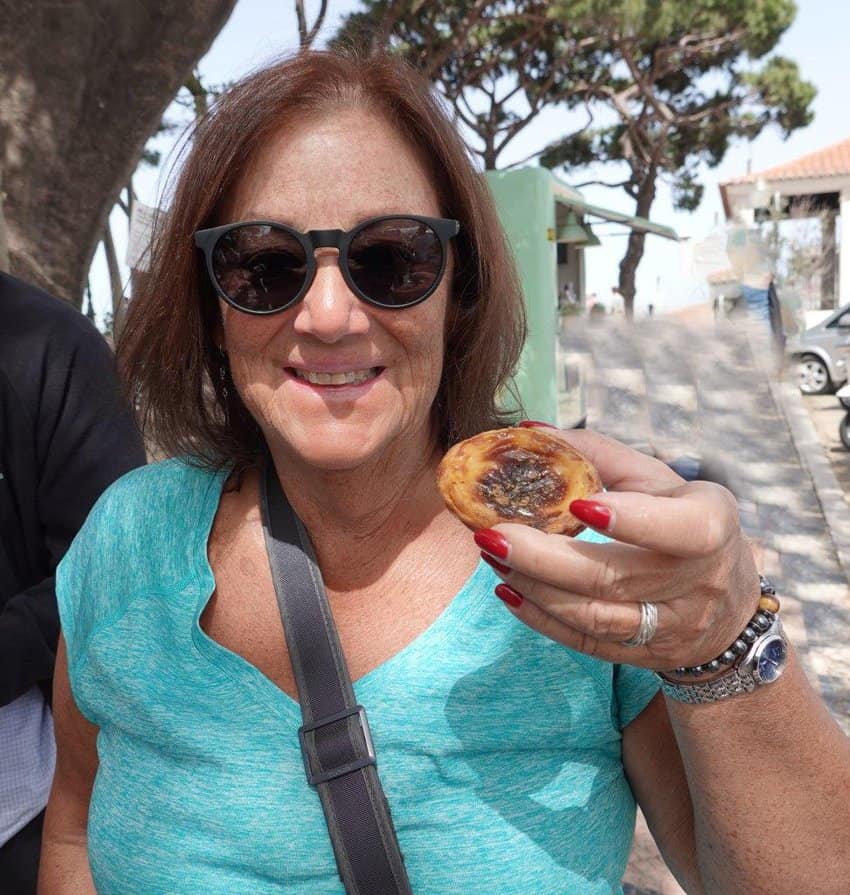
From the Church of Santa Maria go 200 feet east to snack up at one of Lisbon’s famous food places. The Pasteis de Belém has been baking their delicious and savory custard egg tarts since 1837.
While pasteis are made all over the country, purists claim this is the best. The recipe they say is secret and is made by hand one at a time. Not eating a couple of pasteis here would be like going to New York and not having a real bagel. In my travels around Portugal, these are amongst the best. https://pasteisdebelem.pt/en
The Kings Rides
The National Coach Museum had its start in 1905 by the Queen of Portugal. She created the world’s finest coach museum. The opulence knows no barriers when you take a close look at these very old rides.
Housed in two large rooms are dozens of meticulously restored horse-drawn carriages used by the elite people of its time. It is said to be the largest and most valuable collection of its type in the world.
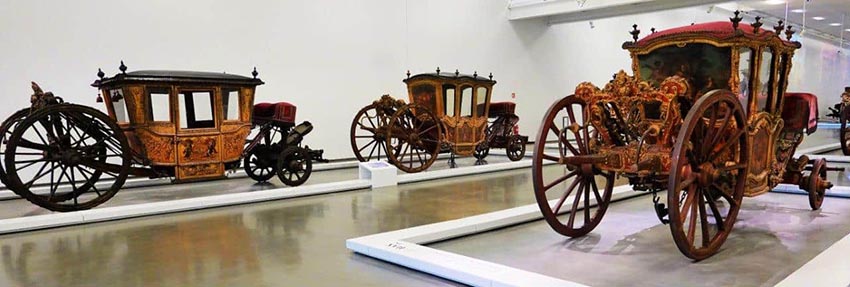
Most carriages are ornately decorated with carved figures and paintings. One of the rarest is the late 16th-century carriage used by King Phillip II to travel from Spain to Portugal in 1619.
Viewing them up close you can see how technology changed to make the ride more comfortable. There are carriages here used by Pope Clement XI, Louis XIX, and Queen Elizabeth II. The carriages span four centuries and five countries. Allow 90 minutes to appreciate this place. website
Lunch Time at Time Out Lisbon
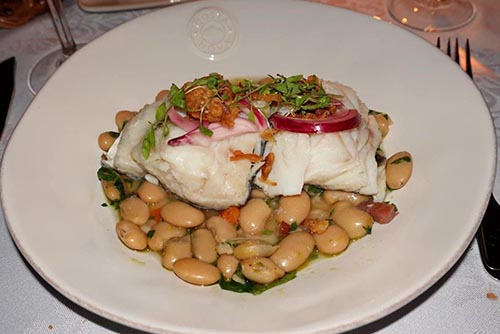
If you are on the river and get hungry I recommend going to the Mercado da Ribeira.
This market has been around since 1892. Inside this large building, you will find the Time Out Market. This is not a “food court”.
There are some very good restaurants and bars here where you will find the best of Portuguese food, some with a modern twist.
Acting on a tip we went straight to the back and shared our lunches from Miguel Castro E Silva and Henrique se Passeo.
There can see the food prepared by the chefs behind the counter. I recommend a progressive meal from a few different counters. For those wanting the basics, there are cooked-to-order hamburger and pizza counters. As soon as you know what you want, have your travel partner secure seats.
The National Tile Museum
If you have an interest in tiles then the last stop along the river should be the National Tile Museum. Housed in the former 1509 Convent of Madre Deus, visitors can learn about Portugal’s tile tradition. The convent’s church, in itself, is a good example of Portuguese baroque architecture decorated all over with tiles. On the different floors, you will see tiles from the 15th Century to modern times.
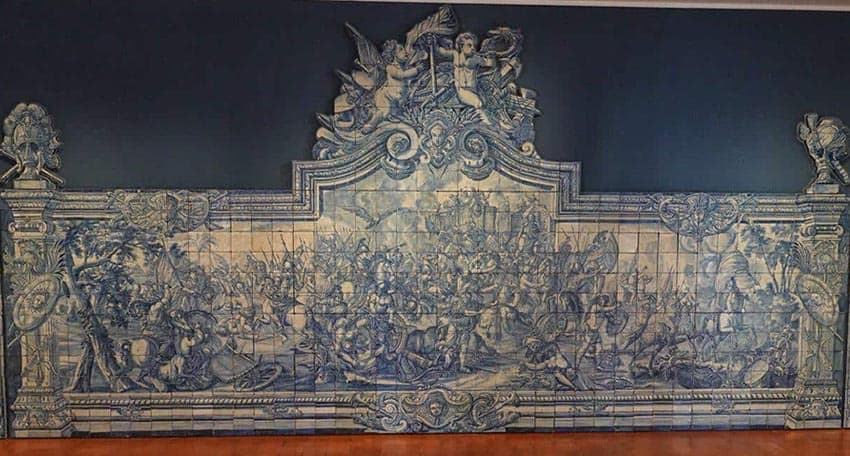
The tiles here depict scenes of religion, history, art, and life. Some of the tile mosaics take up an entire wall to depict a scene. Do not miss the large mosaic of a panorama of Lisbon before the 1755 earthquake. Allow 90 minutes if you appreciate tiles. website
The Lisboa Card
When in Lisbon, purchase the Lisboa Card. It is good for unlimited travel by public transportation (including elevators and funiculars) and trains to Sintra and Cascais. The best part of the card is that it gets you into 26 museums, monuments, and UNESCO Sites. (It should be noted that UBER in Lisbon is efficient and inexpensive)
Lodging
The Lisboa Plaza Hotel is a charming four-star boutique hotel that has been family run since 1954. The hotel offers old-world hospitality with a nice décor, a friendly staff, and refurbished rooms done in 2015. The breakfast served was very good. The hotel is one block from the popular Ave. da Liberdade and a 10-minute walk to Rossio Square. Lisboa Plaza Hotel was a comfortable base for our 3-night stay.
- Through the Arctic Northwest Passage with Adventure Canada - November 7, 2024
- Picket Wire Canyon Adventure - September 10, 2024
- Country Side Charm in England’s Lake District - September 5, 2024


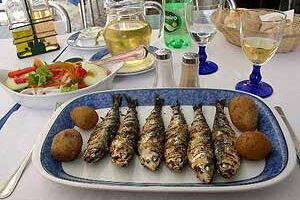
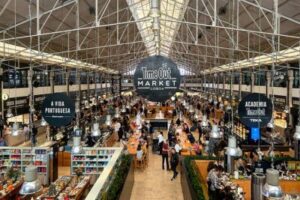
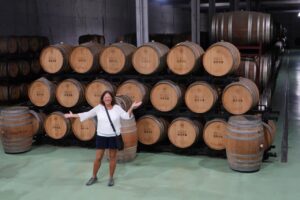
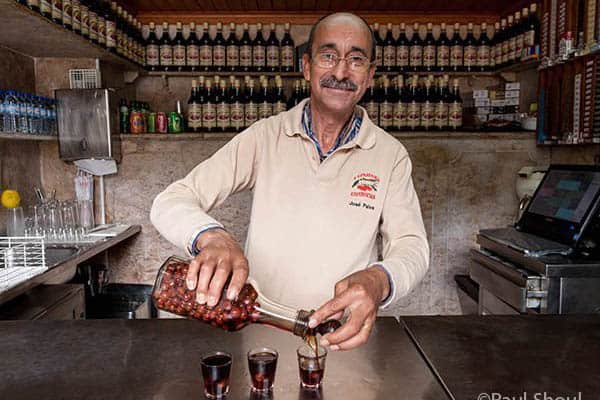


We have an upcoming trip this spring that will have us in Lisbon for two days and were wondering how best to spend our limited time there. This article provided us with many new ideas on sites to visit and food to seek out. We now plan on making a reservation at A Severa for an evening of fado. Thank you Tab for this excellent article…you have made our planning for our time in Lisbon so much easier.
Just beautiful !!